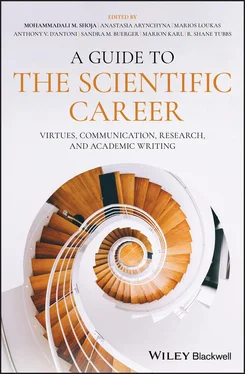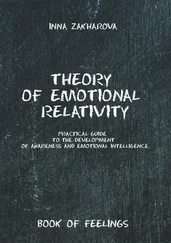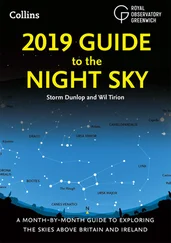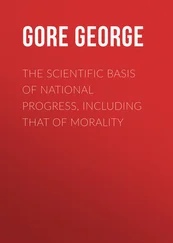13 Section X: Academic Networking 70 Essentials of Interviewing for Prospective Medical Students and Residents 70.1 The Importance of a Great Interview 70.2 General Interview Skills 70.3 Conversational Ability 70.4 Advocating for Oneself 70.5 A Note on Honesty 70.6 Explaining Weaknesses on an Application 70.7 Preparation: A Means of Reducing Anxiety 70.8 Put Your Best Foot Forward: Attire and Behavior 70.9 Interview Expenses 70.10 Scheduling the Interview 70.11 Learn about the Program 70.12 Pre‐Interview Contact 70.13 The Interview Day 70.14 Post‐Interview Contact 70.15 Key Questions to Ask and Be Asked Further Reading 71 Professional and Academic Societies and Meetings 71.1 Academic Societies 71.2 Professional Societies 71.3 Career Benefits 71.4 Getting Started 71.5 Conclusions References 72 Getting the Most from Attending a Professional Meeting 72.1 Introduction 72.2 Choosing a Meeting 72.3 Budgeting for Travel and Housing 72.4 Surveying the Sessions 72.5 Visiting Vendors/Publishers 72.6 Presenting Your Work or Research 72.7 Getting Involved 72.8 Follow‐Up and Follow‐Through References 73 Finding Research Opportunities as a Medical Student 73.1 Why Pursue Research as a Medical Student? 73.2 A Disclaimer: What Benefit Does Research Bring to the Medical Student? 73.3 Background for the Student‐Researcher 73.4 How to Find Research Opportunities as a Medical Student 73.5 Conclusions Acknowledgment References 74 A Guide to Writing a Curriculum Vitae 74.1 Introduction 74.2 What Should Be Included in the CV? 74.3 Cover Page 74.4 Personal Data 74.5 Education 74.6 Professional Experience 74.7 Awards and Grants 74.8 Publications 74.9 Additional Categories 74.10 Formatting/Layout 74.11 Conclusion References
14 Index
15 End User License Agreement
1 Chapter 1 Table 1.1 Levels of creativity.
2 Chapter 4 Table 4.1 Steps for creating a mind map.
3 Chapter 6 Table 6.1 Job satisfaction by discipline and sector.
4 Chapter 8 Table 8.1 Karl Popper's pluralist concept of three interacting worlds o...
5 Chapter 9 Table 9.1 List of h‐type indices and their descriptions.
6 Chapter 15 Table 15.1 Tactics for personal branding for physicians.
7 Chapter 17Table 17.1 Red flags in basic and clinical research.
8 Chapter 18Table 18.1 The Netherlands Code of Conduct for Scientific Practice: pri...
9 Chapter 19Table 19.1 COPE's minimum set of standards for journals.Table 19.2 EASE's recommendations for authors.Table 19.3 Examples of plagiarism detection tools.
10 Chapter 22Table 22.1 Eighteen protected health information identifiers under HIPA...
11 Chapter 23Table 23.1 Regulations and guidelines for non‐US institutions seeking a...Table 23.2 Selected resources containing recommendations and regulations for p...
12 Chapter 24Table 24.1 Foundation types.Table 24.2 Major funding sources. aTable 24.3 Career timeline and relevant grant mechanisms. aTable 24.4 T32 and F32 funding mechanisms.Table 24.5 Funding cycle.Table 24.6 Additional tools and resources.Table 24.7 Example of an essential documents binder table of contents.
13 Chapter 25Table 25.1 NIH writing tips.
14 Chapter 26Table 26.1 Types of observational study designs.
15 Chapter 27Table 27.1 Checklist for retrospective studies.
16 Chapter 28Table 28.1 Categorization by size of controlled clinical trials.Table 28.2 Key features in the trial design.Table 28.3 General features of an informed consent.Table 28.4 Proposal of an informed consent structure.Table 28.5 Definition of roles.Table 28.6 Tasks to be performed when starting a clinical trial.Table 28.7 Classification of data loss and recommendations for obtainin...
17 Chapter 29Table 29.1 Nine categories of animal use in science and research.Table 29.2 Binary classification and formulas for calculating predictiv...
18 Chapter 32Table 32.1 The most commonly used databases in healthcare systematic re...
19 Chapter 37Table 37.1 Types of scientific articles.
20 Chapter 39Table 39.1 Authorship guidelines.Table 39.2 Practical hints on avoiding authorship problems.
21 Chapter 40Table 40.1 Journal impact factor and alternative metrics.
22 Chapter 41Table 41.2 Characteristics of predatory journals and publishers (a trun...
23 Chapter 42Table 42.1 Recourse for locating the scholarly biomedical journals.Table 42.2 Journal metrics.Table 42.3 Recommended approach for submitting manuscripts.
24 Chapter 44Table 44.1 Basic principles to replying to decision letters.
25 Chapter 45Table 45.1 Checklist for resubmitting the revised manuscript.
26 Chapter 46Table 46.1 Comparison of each major medical database.
27 Chapter 48Table 48.1 Grading of scientific evidence.
28 Chapter 52Table 52.1 Examples of line editing. This table shows actual phrases an...
29 Chapter 53Table 53.1 Typical order of the sections of a research paper.
30 Chapter 56Table 56.1 2007 STROBE statement checklist for reporting observational ...Table 56.2 International guidelines for reporting results of animal stu...
31 Chapter 58Table 58.1 The CONSORT 2010 checklist of information (to be included wh...Table 58.2 Clinical trial registries.
32 Chapter 59Table 59.1 Case report self‐evaluation checklist.Table 59.2 The main types of observational and treatment studies.
33 Chapter 62Table 62.1 Strategy for crafting book reviews (based on Lee et al. 2010...Table 62.2 Items important in book review (1 is the most important; 2 a...Table 62.3 The statements and phrases with hidden connotations.Table 62.4 Perspectives of select journals on book reviews.Table 62.5 Checklist for writing a book review.
34 Chapter 64Table 64.1 List of formats that can be used in direct placement into po...
35 Chapter 65Table 65.1 Some individual reference management software and their feat...
36 Chapter 66Table 66.1 A 2 × 2 contingency table.Table 66.2 Common statistical tests used for analysis of data depending...
37 Chapter 68Table 68.1 Explanation of PICO.Table 68.2 Use of Boolean operators for searching mindfulness meditatio...Table 68.3 A crosstab showing abstraction of data elements for studies ...
38 Chapter 69Table 69.2 SPSS analysis of the EM‐imputed dataset.
39 Chapter 70Table 70.1 Common interview questions.Table 70.2 Common questions to ask an interviewer.
40 Chapter 73Table 7.1 Rankings of the importance of Academic Selection Criteria fro...
1 Chapter 4 Figure 4.1 La Jolla , oil on canvas, 2014, by Anthony V. D'Antoni. Figure 4.2 Mind map of a textbook chapter on the assessment and treatment ...
2 Chapter 5 Figure 5.1 The Dunning‐Kruger effect. (a): The unbiased relationship betwe...
3 Chapter 6 Figure 6.1 Three elements of career satisfaction.
4 Chapter 15 Figure 15.1 Personal branding process. Figure 15.2 Elements of a positioning. Figure 15.3 The SWOT analysis (strengths, weaknesses, opportunities, and t...
5 Chapter 17 Figure 17.1 A direct relationship exists between journal impact factor and... Figure 17.2 The spectrum of scientific misconduct.
6 Chapter 19Figure 19.1 COPE guideline: What to do if you suspect plagiarism: Suspecte...Figure 19.2 COPE guideline: What to do if you suspect plagiarism: Suspecte...
7 Chapter 24Figure 24.1 Grant life cycle.
8 Chapter 26Figure 26.1 Case‐control study design.Figure 26.2 Prospective cohort study design.
9 Chapter 27Figure 27.1 Research question in the retrospective studies. The ultimate s...
10 Chapter 28Figure 28.1 Categorization by study design: schematic representation of pa...Figure 28.2 Organizational diagram of clinical trial staff.
11 Chapter 29Figure 29.1 Pathway comparisons between the human burns, trauma, and endot...Figure 29.2 Variation in bioavailability among species..Figure 29.3 Importance of initial conditions.Figure 29.4 Drug development in the future..
Читать дальше












